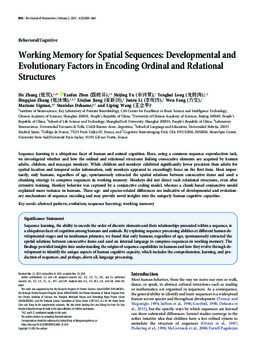| dc.rights.license | After 6 months the work becomes available to the public to copy, distribute, or display under a Creative Commons Attribution 4.0 International (CC BY 4.0) license. | es_AR |
| dc.contributor.author | Sigman, Mariano | es_AR |
| dc.contributor.author | He Shang | es_AR |
| dc.contributor.author | Yanfen Zhen | es_AR |
| dc.contributor.author | Shijing Yu | es_AR |
| dc.contributor.author | Tenghai Long | es_AR |
| dc.contributor.author | Bingqian Zhang | es_AR |
| dc.contributor.author | Xinjian Jiang | es_AR |
| dc.contributor.author | Junru Li | es_AR |
| dc.contributor.author | Wen Fang | es_AR |
| dc.contributor.author | Dehane, Stanislas | es_AR |
| dc.contributor.author | Liping Wang | es_AR |
| dc.date.accessioned | 2022-11-28T22:35:25Z | |
| dc.date.available | 2022-11-28T22:35:25Z | |
| dc.date.issued | 2022 | |
| dc.identifier.issn | 1529-2401 | |
| dc.identifier.uri | https://repositorio.utdt.edu/handle/20.500.13098/11462 | |
| dc.identifier.uri | https://doi.org/10.1523/JNEUROSCI.0603-21.2021 | |
| dc.description.abstract | Sequence learning is a ubiquitous facet of human and animal cognition. Here, using a common sequence reproduction task,
we investigated whether and how the ordinal and relational structures linking consecutive elements are acquired by human
adults, children, and macaque monkeys. While children and monkeys exhibited significantly lower precision than adults for
spatial location and temporal order information, only monkeys appeared to exceedingly focus on the first item. Most importantly, only humans, regardless of age, spontaneously extracted the spatial relations between consecutive items and used a
chunking strategy to compress sequences in working memory. Monkeys did not detect such relational structures, even after
extensive training. Monkey behavior was captured by a conjunctive coding model, whereas a chunk-based conjunctive model
explained more variance in humans. These age- and species-related differences are indicative of developmental and evolutionary mechanisms of sequence encoding and may provide novel insights into the uniquely human cognitive capacities. | es_AR |
| dc.description.sponsorship | Journal of Neuroscience | |
| dc.format.extent | p.850-864 | es_AR |
| dc.format.medium | application/pdf | es_AR |
| dc.language | spa | es_AR |
| dc.publisher | Journal of Neuroscience | es_AR |
| dc.rights | info:eu-repo/semantics/openAccess | es_AR |
| dc.subject | Abstract pattern | es_AR |
| dc.subject | Evolution | es_AR |
| dc.subject | Sequence Learning | es_AR |
| dc.subject | working memory | es_AR |
| dc.title | Working Memory for Spatial Sequences: Developmental and Evolutionary Factors in Encoding Ordinal and Relational Structures | es_AR |
| dc.type | info:eu-repo/semantics/article | es_AR |
| dc.type.version | info:eu-repo/semantics/publishedVersion | es_AR |

